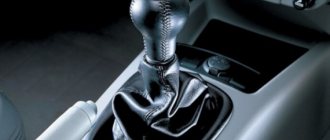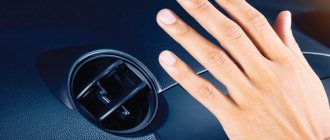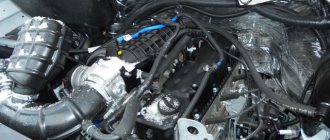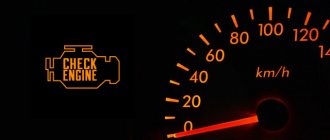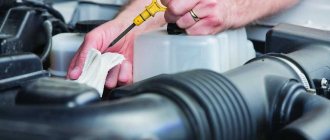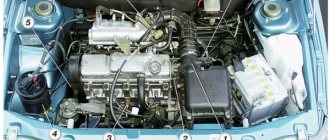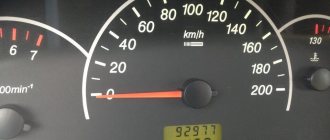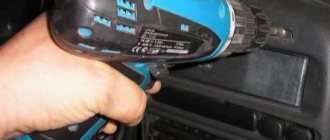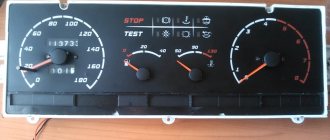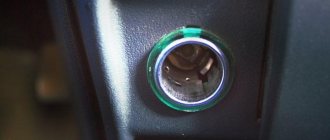Many car owners are faced with the fact that brake fluid suddenly disappears from the reservoir. At the same time, the performance of the brakes deteriorates, and a noticeable puddle may form under the car. This article explains how to identify and fix the cause of the leak. It also says how you can get to a car service center or garage with this problem.
How to check the fuel fluid level?
By looking under the hood, where a special tank is located, you can check the level. The tank is made of translucent plastic, so it is easy to determine by the minimum and maximum value marks whether the brake fluid has left or remains in the original amount. In case of topping up, it is better to familiarize yourself with the car's instructions in detail: in some brands that have ABS, bleeding of the brakes is required.
If you do lose brake fluid, you should first understand the reasons. Under no circumstances should you continue driving.
How to determine the location of the leak?
First of all, you need to become familiar with some of the signs that indicate a faulty brake system. Firstly, this is an increase in pedal free play, and secondly, a decrease in braking efficiency. All of this may indicate a leak in the brake system. Therefore, if this happens, be sure to check the brake fluid level; most likely, it has been low.
Attention!
A drop in brake fluid level in cold weather in no way indicates compression of the fluid at low temperatures! The fact is that many drivers mistakenly consider a decrease in brake fluid level in the cold to be a completely normal sign. However, it is not.
You need to start checking from the reservoir, then move on to the main brake cylinder, and only then inspect the circuits and working parts of the brake system. Leak locations can always be “marked” by the most common traces of brake fluid, which are difficult to evaporate and are very easily noticeable even by an inexperienced driver.
The weakest points of any braking system are considered to be the joints of the brake circuits or the seals of the braking organs. Therefore, you need to pay attention to them first.
The tank is cracked - what to do first?
Some motorists mistakenly begin to dismantle the entire brake assembly. Calmness and a visual inspection are the first step towards a successful repair. Wet marks and smudges indicate a decrease in the level of the substance. If a crack is detected, experienced car owners advise replacing the tank immediately - sealing it will not help. What to do if an incident happens on the route?
Topping up brake fluid: do's and don'ts
The general automotive rule, top up what you put in, is relevant for all technical fluids, including brake fluids. If you don’t remember the brand of the compound you poured, and you don’t have any maintenance records with you, welcome to the world of Department of Transportation standards.
According to DOT regulations, brake fluids are classified by boiling point and viscosity. The requirements are important - the brake fluid must not boil: when the brakes heat up excessively, gas bubbles form. They compress and the pedal falls, leading to system failure. Viscosity is also clear: brakes must be equally effective in cold and hot weather.
So, there are four types of brake fluids:
- DOT 3 – low-speed equipment.
- DOT 4 – civil small cars with disc and drum brakes.
- DOT 5.1 – sports and civilian modifications with “discs” in a circle.
- DOT 5 – racing cars.
A numerical explanation of the differences between these four products is provided by FMVSS No. 116, an excerpt from which is given in the table. To understand what can be mixed with what, you need to understand the differences in chemical composition.
The structure of brake fluid is similar to motor oil - it is a base, which can be mineral, glycol, silicone, + additives, additives, dyes. The conversation about what kind of engine oil to use for topping up came up the day before. The conclusion was this: if you mix products from different manufacturers with each other, then only if the base and viscosity indicators are 100% similar. The same analogy can be drawn with the braking system. But first, let’s look at the chemical composition of each DOT:
- BSC – mineral base (castor oil and alcohol in a 1:1 ratio).
- DOT 3,4,5.1 – glycol base (chemical compound based on polyhydric alcohols).
- DOT 5 – silicone base (silicon-organic polymer products).
Considering that the vast majority of cars use glycol brake fluids, it is good practice to have a sealed bottle of DOT 4 or DOT 5.1 with you. Why sealed? The fact is that already in the open state, the technical fluid absorbs moisture from the atmosphere, which is why after a year it becomes unsuitable for use.
If you are a fan of retro technology, then keep in mind that you cannot add glycol to mineral liquid. However, it is also prohibited to fill the empty brake lines of an old car with glycol fluid: the cuffs will swell, and clots will form from the remains of the “mineral water”.
First aid when a crack is detected
The reasons why brake fluid leaves the reservoir can be different. This may occur as a result of the machine hitting an obstacle. The car service is far away - what should I do? Repairing a crack in the path is only possible to continue moving. Upon arrival at your destination, you will have to purchase a new tank. Glue doesn't help in most cases. Craftsmen recommend using a regular 40-watt soldering iron, slightly extending the rod and slightly loosening the top screw. A piece of plastic tape similar to the body of the tank is cut off. It is unsoldered and used as a patch. First you need to go over the crack with a soldering iron, then use a strip of prepared plastic.
Problem: after replacing the brake fluid on the car, the pedal became soft and uninformative
By changing the brake fluid, the car enthusiast fulfills one of the requirements of routine maintenance on the car. Namely, replace the fluid after two to three years. The manufacturer confidently states that if this is not done, it will be bad. In fact, the emulsion is hygroscopic and can “grab” moisture from the air during this time. Of course, this will negatively affect the functioning of the system as a whole. Safety comes first - we change. We fueled everything up, tightened it up, started it up and drove off. And then we notice that after replacing the brake fluid, the pedal became soft and uninformative. What to do? There are several reasons for this problem floating around the web:
- The system is filled with low-quality components.
- The replaced elements of the assembly did not get used.
- The system is poorly pumped.
The first feature is more often a myth than a reality. The second one can appear when replacing the pads due to the fact that they have not gotten used to the disk and are pressed into the grooves of the groove. There are two ways out - wait 900-1,000 km until everything breaks in or sharpen the discs to get an instant effect. However, most often the problem of a soft pedal is associated with other problems:
- The main brake cylinder is not bled.
- The brake force distributor between the rear and the front is not pumped (sorcerer) - this does not apply to all cars.
- One of the components of the assembly is leaking (fuel fluid will leave the tank).
- One of the rubber hoses is inflated.
Replacing the tank on a VAZ-2109
The algorithm for replacing the tank is simple. The car must be washed outside and in the engine compartment. This should be done manually, avoiding moisture getting on the pads, starter, and sensors.
Then you need to jack up the car and clean the threaded connections that you will have to deal with. By visual inspection, you can recognize where the brake fluid goes. The reasons for this trouble will also in most cases become clear.
By unscrewing the nuts and disconnecting the cover wires, a person gains access to the tank, which must be removed.
Important advice from experienced car owners! To loosen hose clamps, it is better to unscrew the bolts using pliers.
Where to dig: the brake pedal on a car fails and the brake fluid does not leave the reservoir
The fear of a sunken pedal often occurs among beginners. After all, they don’t really know the design of this unit. Meanwhile, there is nothing to be afraid of if the vacuum amplifier comes into operation. Usually he does this after starting the engine. If you press on the lever at this moment, it will fail when you start the engine, and it will instantly become easier to operate.
It's worth sounding the alarm when a running power plant exhibits a malfunction in the form of the brake pedal sinking and the brake fluid not leaving the reservoir anywhere. If she had left, the diagnosis would have been made immediately - a leak in the system.
However, the problem posed is known to all mechanics. Its essence is that there is air in the system. It is not recommended to ignore the symptom. It is better to immediately stop using the car or, if this happened in the garage, not to leave. In this case, you should take into account the rules. According to them, towing a car with an automatic transmission or robot, and in this case with a manual transmission is also prohibited - it is impossible to slow down. A tow truck with a full or partial load is the only option to get to the service station or home.
The way to solve the problem is to bleed the system. The process has already been described and is quite feasible at home. In technology, it is important to follow the schematic. It wouldn’t hurt to repeat the pumping scheme 3-5 times.
Often, when a pedal fails, the ABS system is blamed. However, this is erroneous - it does not affect the initial operation of the deceleration unit. You can simply check this yourself by deactivating the ABS and driving in a safe area. The conclusion of the test drive will be negative - the problem will not go away.
Clutch hose repair method
Experts say one of the common reasons why clutch brake fluid has leaked is a damaged hose through which fluid circulates from the reservoir to the clutch.
Effective replacement tips:
- You need to remove the tank itself by removing the clamp from below.
- You should purchase a new hose, preferably red.
- You need to pull out the damaged hose carefully so as not to accidentally break off the plastic fitting.
It is important not to allow fluid to leak onto the fender or paint. After removing the tank, you should rinse it with water; it is also recommended to replace the clamps. We install the hose and tighten it without much effort. Don't forget to tighten the nuts as well.
Experts say that the hose often wears out. It must be checked periodically and, if damage is detected, replaced with a new one.
How to get to a service station if brake fluid leaks on the road
If you notice that the brake pedal is sinking, this indicates a brake fluid leak. In this case, the corresponding indicator signals an emergency situation. If you see such a red icon on the dashboard, you need to take immediate action, otherwise the trip may end in an accident.
If you see a red brake light while driving, you should stop immediately. Look into the reservoir with the brake fluid, if you see that its level has dropped below the minimum, you have found leaks of brake fluid, it must be topped up. If you do not carry suitable solutions with you, you will have to drive to the store. It is possible that over the next year or longer the warning light will no longer bother you.
But if after a few days or even weeks the indicator again begins to signal a malfunction of the brake system, and you again observe leaks of brake fluid, then the matter will no longer be limited to just topping up. The reason may be wear on the caliper cylinder pads; brake fluid leaks through these places. You may find brake fluid leaks under the clutch cylinder, which means this is a problematic system that needs to be inspected and repaired.
If you find that the level of fuel fluid in the reservoir is rapidly falling, and no brake fluid leaks are visible, it means that the brake booster has broken down - a defect has formed in the membrane, through which liquid is leaking into the large container. The system will have to be repaired at a car service center. Call the technician and find out what parts are needed. Then you will need to place an order for parts and schedule a repair date.
It happens that during the next inspection, brake fluid leaks are discovered on the rear wheel. What to do in this case?
A leak on the inside of the wheel indicates that the brake cylinder seal has torn. The caliper may also come out of the cylinder or the pads may wear out badly, and this also leads to intense leakage of brake fluid. If the tank turns out to be empty, in order to get to the repair shop, you need to pour at least some liquid into it. This could be vodka; it is preferable to water in winter because it will not freeze. You can also pour oil, it will not boil under pressure. In extreme cases, you can pour water. If you urgently need to repair your car, then there is no choice.
For example, you diluted soap in water and poured this mixture into the tank to the top, but when you press the brake pedal, the solution suddenly begins to flow away. A few presses on the pedal will completely empty the barrel, and there will be brake fluid leaks under the car.
How to be in this case? There is only one way out - call a tow truck. The brake system of your car does not work at all; you cannot drive such a car. Such a vehicle cannot be towed. But what if you are, for example, in a deep forest or on a deserted highway, and you can’t reach a tow truck?
In this case, you can proceed as follows:
- fill the empty tank as completely as possible;
- jack up the wheel on which the cylinder is faulty and brake fluid leaks are detected;
- remove the wheel;
- find a piece of rubber from a tube, an old tire protector will do (you can look along the road or in a landfill). As a last resort, you can use a knife to cut off a small piece of the wheel tread;
- unscrew the brake pipe;
- Place a cut piece of rubber on the place where it is attached, blocking the hole;
- put the tube in place.
Brake cylinder leak
A common cause of brake fluid loss is a leaking cylinder. The occurrence of a problem is judged by the stain left under the vehicle. Finding out the reason is easy.
- You will have to remove the wheel and carefully inspect the brake disc.
- The calipers should be checked for leaks.
If you have a brake drum system, there is an urgent need to remove the drums. The problem involves wear of the rubber seals. Especially often, such troubles await residents of regions with severe frosts.
Brake fluid leaks: when is this considered normal?
Normally, the fluid level in the reservoir above the master cylinder should drop very slowly and be restored to its previous value after replacing the pads.
In total, if we neglect the hygroscopic tendencies of the overwhelming number of “brakes”, then the volume of technical fluid (working fluid) in the system should not change. A temporary decrease in brake fluid level is associated with pad wear. To be precise, the brake pistons in the calipers and cylinders move out as the friction material wears, increasing the volume of the entire system. Since no one has added brake fluid, its level in the reservoir drops accordingly, while the amount remains the same. In total, a constant gap between the pad and the disc/drum maintains the sharpness of the brakes as the pads wear, and the level usually fluctuates within the permissible gap - between the MIN and MAX marks. Before installing new pads, it is customary to press in the pistons in the calipers. Similar work must be done with the drum brake cylinders. And now, with regard to the brake fluid level, we see a completely opposite picture: it is rising and this is absolutely normal. So it turns out that there is no need to add fluid to a working system, provided that its level is above the minimum.
About the consequences
There can be many answers to the question of where the brake fluid goes from the reservoir. It can go into the vacuum muffler. This indicates a high percentage of wear on the master cylinder piston cuff. For simple rubber there is nothing terrible about this. Another issue is the accumulation of the product in the form of a dangling layer. This will result in an increase in resistance at high diaphragm speeds. There is an opinion that such a situation simply kills the diaphragm. By changing the cuff, movement will become safe. Sometimes you have to install a repair kit while disassembling the vacuum unit.
Some motorists ask whether brake fluid can leak into the engine. Experts give a negative answer. She can only get there if she confuses the canisters with liquid.
Mono: how to change car brake fluid for one person without assistance
There is only one way to solve the question of how to replace brake fluid for one person. His goal is to update the composition in the tank and lines without using the help of a partner. The features of this method are similar to bleeding the brakes:
- To speed up the process, it is recommended to immediately remove the working emulsion from the expansion tank using a bulb or a syringe with a tube attached.
- The preparatory stage consists of purchasing 1 liter of brake fluid and a 1 meter long tube, suitable in diameter to the outlet fittings on the brake cylinders. You will also need a cut-off bottle with a certain amount of working fluid so that air does not pass through the fitting into the system.
- During the process of replacement/pumping, the composition gradually leaves the tank. The level must be replenished regularly, otherwise the system will become airy.
Process technology
The essence of the replacement is the flow of the working fluid under the influence of gravity. After all, the tank is at the highest point. In fact, the operation is no more difficult than checking the injectors of a diesel or gasoline engine. As a result, the set of actions is as follows:
- Empty the expansion tank and fill it with new fluid up to the MAX limit mark.
- Clean all 4 drain fittings and install tubes on them. Place the latter in plastic containers with “brake fluid”.
- Unscrew all the drain fitting nuts one by one:
- right rear;
- left rear;
- right front;
- left front.
- While watching how the composition drains, do not forget to add a new drug to the tank.
- When the volume of liquid poured from the left front wheel reaches approximately 200 ml, tighten the fittings on it and on all other cylinders in the reverse order:
- front left;
- front right;
- rear left;
- rear right.
- Restore the fluid level in the tank.
- Clean the fitting and put a tube on it, lowered into the brake fluid.
- Create pressure in the retarding system.
- Unscrew the union nut and wait until the liquid pressure decreases to low.
- Close the fitting.
- Repeat until liquid comes out without bubbles.
Leveling up
The method is relevant if there is no air in the deceleration system. If there are air bubbles in the unit, the emulsion will not drain under the influence of gravity. Excessive pressure is required to bleed it off - just like in production. In this case, replacing the composition comes down to bleeding the brakes:
Excessive pressure in the system can be created in several ways:
- Find an assistant or pump the brake pedal yourself and press it with a gas stop from the hood/trunk installed between it and the seat.
- Insert the syringe with the emulsion into the lid of the tank and seal it. Having opened the fitting, press the syringe pusher.
- Install the car nipple into the cover. Seal with sealant or superglue. Remove the nipple and install the tube. Install the opposite end of the hose onto the quick-release tip of the pump. Take excess pressure from the spare tire. You can do it even simpler - apply pressure from the compressor to the spool.
The procedure is repeated until the result is achieved, as indicated by the absence of air in the system. You can bleed the system yourself according to the following scheme:
- Right rear.
- Front left.
- Rear left.
- Front right.
Symptoms of defects in the master brake cylinder
Rubber seals on the brake master cylinder cause leaks. They cause penetration of the vacuum booster. In such a situation, replacing the cylinder will help. If a malfunction occurs with the cylinder, the brakes fail completely or do not work correctly. The main challenge for this part is the aging of the brake pads. Diagnostics involves an initial warning to the driver using indicators on the dashboard and checking the pressure in the system. What does the motorist see as a result of the problems that have arisen?
- Pressing the pedal, the owner of the steel horse feels its slow stop. The point here is the loss of tightness of the pistons or wear of the cuffs.
- A short pedal stroke means a high concentration of brake fluid; it has nowhere to go due to a clogged hole or a swollen rubber seal.
- There is a failure of the pedal: the matter is in the liquid rushing into the expansion tank.
Features of braking systems
Modern brake systems consist of: a master cylinder, a master cylinder reservoir, wheel brake cylinders, hoses, pipelines, a brake booster, discs or drums, and pads. When braking, high pressure arises in the system, which forces the mechanisms to work and the car to reduce speed. If the system is leaking, brake fluid leaks. It can be associated with damage to various elements and manifest itself both during movement and braking, and while the car is parked.
Secrets of bleeding brakes
To complete the repair process, the brake system needs to be bled. You can do the work yourself or contact the service.
- Fill the reservoir with brake fluid up to the max mark.
- The wheel brake fittings need cleaning.
- Take a separate container and a hose attached to the fitting.
The assistant sitting behind the wheel must press the gas pedal evenly and firmly three times. When pressing the fourth time, the pedal does not need to be released. At this time, you need to unscrew the fitting and look at the outlet of the fuel injection fluid. Bubbles in the stream will indicate air in the system. After the air is released, the fitting is wrapped, and the process is repeated on another set of wheels. Observing all pumping rules, it is impossible to be completely sure of the reliability of the result. Experienced car enthusiasts recommend not to neglect the services of service stations.
When making repairs yourself, experts advise tilting the car slightly towards the wheel in question. The air will rise upward and reach the threaded valve sooner. Lightly tapping the caliper optimizes the process. In addition to the above-mentioned bleeding technique, there is a technique for adding brake fluid to the supply reservoir. This is difficult to do and only experienced vehicle owners can do it. This procedure is not feasible for machines with return pressure control valves.
If handled incorrectly, there is a high risk of causing new breakdowns and having the opposite effect - the appearance of air in the brake system in even larger quantities. Professionals will come to the rescue; they will complete the work competently within the optimal time frame.
Sources of brake fluid leaks
Brake fluid may leak from one (or several) elements of the brake system. May leak:
- brake hose;
- brake pipe;
- tank;
- cylinders;
- places of fastening and connection of the components of the assembly.
Crack in the tank
The fluid level may drop due to mechanical damage to the reservoir. This malfunction is easily identified by a simple inspection: oil leaks are visible. The tank will have to be replaced with a new one, do not be greedy and do not try to solder it.
Depressurization of the brake line
One of the most dangerous breakdowns. It manifests itself simply: when pressed, the pedal goes to the floor almost without resistance, and the car does not noticeably slow down. If this happens to your car, stop immediately. Use the handbrake or use the engine brake. You cannot drive with such a malfunction; you risk your life.
Damage to the brake hose
Hoses are made of rubber, so sooner or later they will crack. This can be determined by carefully feeling the hose. It must be dry (without leaks of fuel fluid), without damage or tears, and be easy to bend. If something is wrong, the hose is changed.
The hose may fly off the fitting - this is another reason for brake failure. To repair, either put it in place, tightening the clamp tightly, or replace it with a hose of smaller diameter.
Clogged hoses and pipelines
Using low-quality brake fluid, neglecting daily car care and violating maintenance schedules can lead to blockages in the main pipeline. Eliminating this malfunction will take a lot of effort and time, so don’t skimp on the TZ and don’t forget about prevention.
Loosening the fastening
All transitions and seals between components in the braking system must be as tight as possible, otherwise leakage of fuel fluid and air leaks cannot be avoided.
The main brake cylinder is faulty
Most often, seals fail. It's easy to change them even yourself. A malfunction will be indicated by leaks of technical fluid.
Violation of the integrity of the brake cylinder
The absence of traces of fuel fluid on the master cylinder does not necessarily indicate its serviceability. The fluid does not always flow outward; it can go inward, into the brake booster. It is more difficult to identify this failure; you will have to remove the cylinder. In this case, the unit must be replaced, we are not talking about repairs.
The wheel brake cylinder is faulty
If you see traces of fuel oil on the asphalt near one of the wheels, most likely the reason is the wear of the wheel cylinder seal. To replace a defective seal, you will have to jack up the car, remove the wheel and caliper, and only then begin repairs. If you do not consider yourself a car repair specialist, it is better to turn to professional car mechanics.
Emergency situation: how to get to the repair site without brake fluid available
Of course, the best option in these conditions is to transport the car by tow truck. Far from home, it is more convenient to find the nearest gas station, buy an analogue of the filled brake fluid and continue on your own. I repeat, the manufacturer does not matter, the identity of the bases is important. Referring to extreme circumstances, when the brakes no longer work and the pedal fails, you won’t be able to get away with just topping up - the system will have to be pumped without it.
Once upon a time, there were tips on the Internet to use oil, soapy water and alcohol for topping up. So, it is categorically not recommended to adhere to them: alcohol and oil, be it engine, transmission or power steering, are partly compatible only with mineral brake fluids. Glycolic additives like these can only do harm. Well, as for soapy water - yes, it works and is also harmful - corrosion begins, and flushing the brake system after it is not a pleasant pleasure.
The brake fluid suddenly went away. Verdict – it’s flowing, but where?
Any hydraulic system with moving parts includes rubber seals, and the brake system is no exception. Cuffs allow you to dock various parts, mate moving parts with stationary ones, without giving liquid any chance of leaking. At the same time, the cuffs are the weak link of any unit. It becomes even weaker from low-quality brake fluid, long-term parking and low-quality materials used in its production.
However, there are also unusual situations when the brake line cracks or defects are found in the master brake cylinder. Returning to the standard places of leaks, it should be noted that it is worth looking at all the places where rubber seals are used and the diagram will help us with this:
- Vacuum brake booster (VUT) – master cylinder (GTC).
- The reservoir is the main brake cylinder.
- Each of the cylinder-piston wheel pairs.
- Soft, goes to the floor - wheel calipers.
- Hard – leaks in the area of the brake master cylinder or reservoir.
Brake fluid leaked from the rear wheel
Any liquid has the ability to flow from one place to another. Brake fluid is no exception; it can leak. But this property of it, like a similar property of any other liquid for technical purposes, is fraught with the fact that some unit may simply fail, or even an accident may occur - a very dangerous phenomenon, especially when traveling on the road .
Checking the brake fluid level
For this seemingly simple reason, every day you need to look under the hood of your car in order to visually check how much brake fluid, antifreeze and engine oil is left in the car. This way you can constantly monitor the amount of brake fluid in the system and thereby protect yourself from an accident on the road.
Along with visual inspection, you need to check the quality composition of this liquid every 6 to 12 months. To do this, you need to purchase a special tester. The frequency with which the check needs to be carried out directly depends on the mode in which the machine is operated.
When inspecting the brake fluid reservoir, you need to carefully look at its side walls. There should be no deposits on them. If they are, and there may also be drops of water or foreign particles, then you will have to completely replace the brake fluid.
The most common reasons why brake fluid leaks
If you have discovered the fact that brake fluid is still leaking from the reservoir, then you need to begin identifying the cause of the leaks. It should be remembered that traces of leakage may not be obvious, that is, not in the same way as engine oil comes out. So, an unreasonable drop in the brake fluid level may indicate that:
1) The brake pads are too worn;
2) The cuff on the master brake cylinder is worn out, which can cause brake fluid to flow into the vacuum booster. With such a malfunction, it is very difficult to determine the fact of a leak by eye;
3) The cuffs on the wheel brake cylinders are worn out. If you remove the wheels, you can immediately see traces of the brake fluid that has leaked;
4) There is a defect in the brake pipe or hose system.
It is necessary to check the brake system, and very carefully. This especially needs to be done in winter, when low temperatures cause all technical rubber products to harden. This way, you can save yourself and your passengers from brake failure at the most inopportune time.
How to Fix a Brake Fluid Leak
Correcting such a defect will not be difficult, so you can fix everything yourself. To do this, you need a set of tools that any good motorist has. Be sure to check the condition of the hoses. If they have even the slightest damage, they need to be replaced immediately. Passenger cars often have a standard type of hose, so replacement will not be problematic. But sometimes finding new hoses is quite problematic. If brake fluid leaks only on one of the wheels, then the seal needs to be replaced. This procedure will only take a couple of minutes. First you need to lift the car using a jack, placing boards or beams of wood under the axle. Then you will need to remove the desired wheel. Be sure to place wooden wedges under the remaining wheels or turn on the hand brake.
After you have done all this, you should remove the caliper. Before removing it, you need to press and lock the brake pedal. This can be done using a piece of board. Next, you will need to move the piston, after which you can finally remove the caliper. If you cannot loosen it, then you need to press the brake pedal a couple of times, due to which the piston will come out of the cylinder. After this, you can remove the caliper and proceed to repair work.
Before installing a new seal, its seat must be thoroughly cleaned from the remnants of the old seal. You also need to check whether there are any traces of corrosion on the cylinder and piston. If there are marks, then the surface must be cleaned using fine sandpaper. You also need to check the valve on the bleeder fitting to see if it unscrews. After which you can install a new seal. After installing the seal, you will need to install a boot that will protect the piston from dust. Brake fluid leaks can be avoided if you pay enough attention to your car.
Subscribe to our feeds on social networks such as Facebook, Vkontakte, Instagram, Twitter and Telegram: all the most interesting automotive events collected in one place.
Hello everyone, tell me what could be, brake fluid is leaking from the rear wheel.
The car at idle for place “0” shows 50 km
by Adminrive · Published 02/26/2017
Prani for a separate spoiler or what it comes with
by Adminrive · Published 03/10/2016
Who uses what kind of synthetic?
by Adminrive · Published 01/17/2016
- Comments 16
- Pingbacks 0
Maybe a hose. You can even look at it yourself, but it's too easy. We'll guess faster here
Alexander, you can drive like this.
Maxim, it’s possible if you’re a masochist)
Maxim, at any moment the fluid will go away and you will have no brakes)
you will change and replace the linings with new ones and wash the drum with cleaner
Alexander, I checked the liquid in the barrel; how much was there?
Maxim, well, it needs to be changed in any case. The faster the better. You can probably get to the store and back)
Alexander, well, it’s clear that we need it. How much does it cost??
Maxim, cylinder 300-600 rubles. I recently bought it for 500. For good measure, the pads still need to be changed. Well, the brakes need to be pumped and topped up. If you take everything cheap, you can get it under 1000)
I had a leak in the spring, 3 days ago I stopped at a service station and they said you’re crazy and your brakes could fail at any moment))
As a result, I changed all the springs, pads, two handbrake cables and cylinders
Alexander, I got ready at 2100, 2 brake cylinders, pads, front brake discs. I took the middle price category
Ilya, it's okay. I thought the discs alone cost about 2k)

